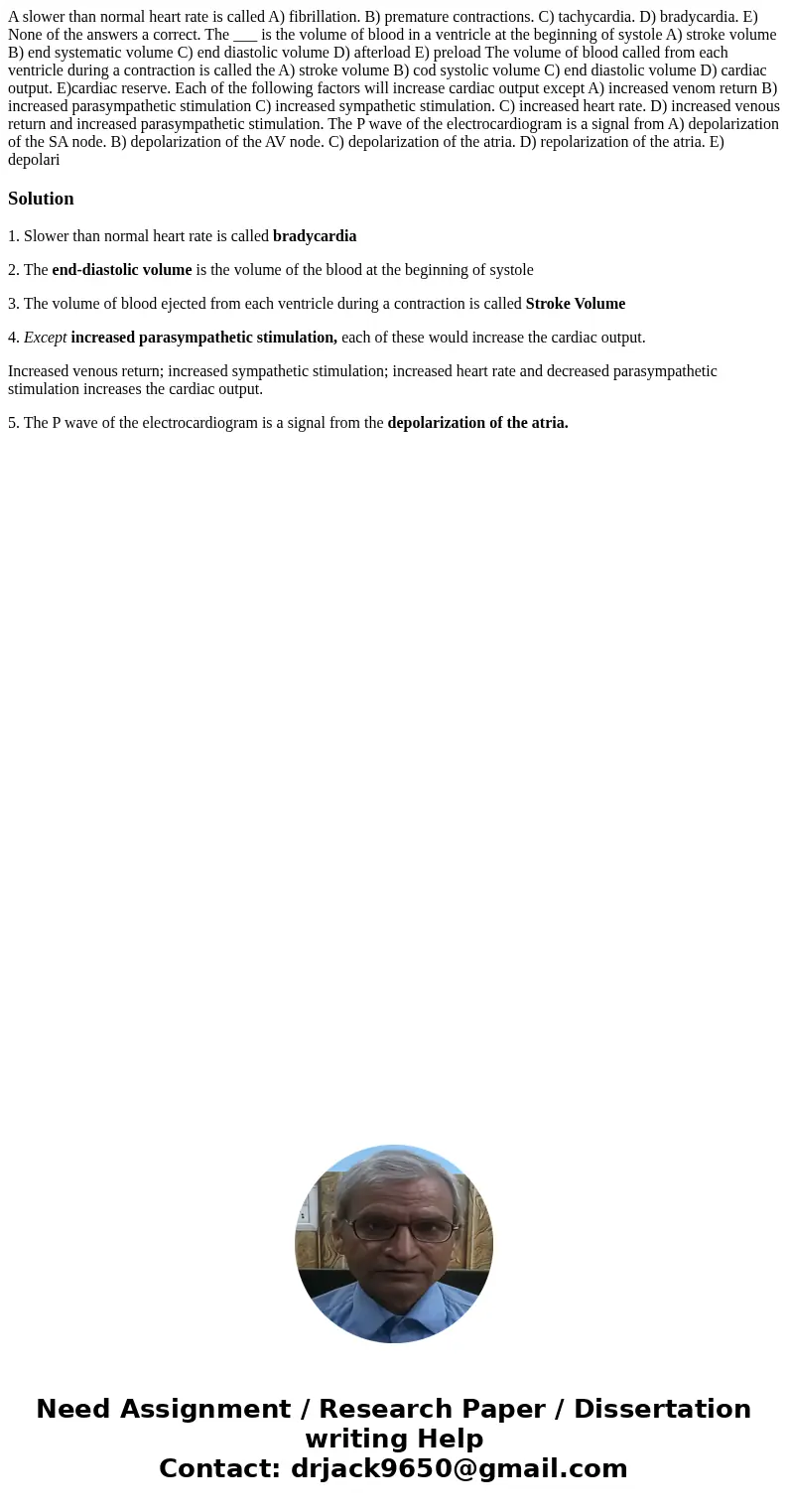A slower than normal heart rate is called A fibrillation B p
A slower than normal heart rate is called A) fibrillation. B) premature contractions. C) tachycardia. D) bradycardia. E) None of the answers a correct. The ___ is the volume of blood in a ventricle at the beginning of systole A) stroke volume B) end systematic volume C) end diastolic volume D) afterload E) preload The volume of blood called from each ventricle during a contraction is called the A) stroke volume B) cod systolic volume C) end diastolic volume D) cardiac output. E)cardiac reserve. Each of the following factors will increase cardiac output except A) increased venom return B) increased parasympathetic stimulation C) increased sympathetic stimulation. C) increased heart rate. D) increased venous return and increased parasympathetic stimulation. The P wave of the electrocardiogram is a signal from A) depolarization of the SA node. B) depolarization of the AV node. C) depolarization of the atria. D) repolarization of the atria. E) depolari
Solution
1. Slower than normal heart rate is called bradycardia
2. The end-diastolic volume is the volume of the blood at the beginning of systole
3. The volume of blood ejected from each ventricle during a contraction is called Stroke Volume
4. Except increased parasympathetic stimulation, each of these would increase the cardiac output.
Increased venous return; increased sympathetic stimulation; increased heart rate and decreased parasympathetic stimulation increases the cardiac output.
5. The P wave of the electrocardiogram is a signal from the depolarization of the atria.

 Homework Sourse
Homework Sourse